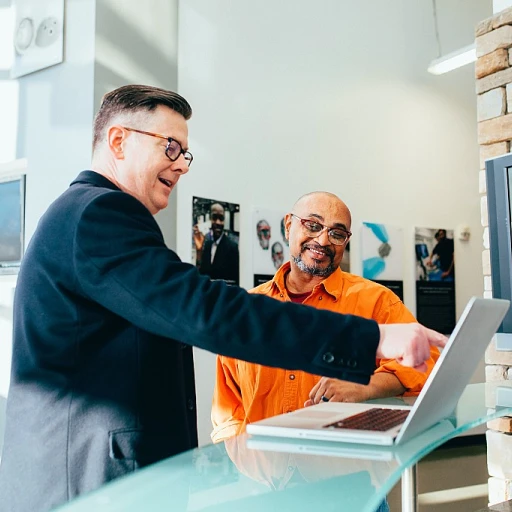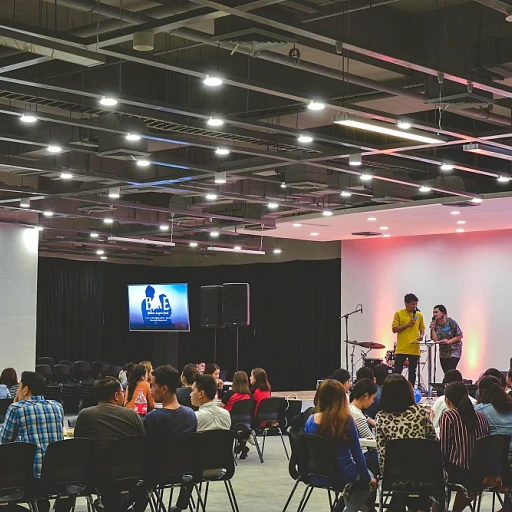
Recognizing the Need for Innovation
Recognizing Opportunities for Innovation
In today’s fast-paced world, innovation is not just a buzzword; it is a necessity for growing organizations. Leaders striving to enhance their leadership skills must first recognize when it is time to shift gears and focus on innovative solutions.
Leaders should begin by understanding the landscapes within which their organizations operate. People often don’t realize the various opportunities for innovation simply because they are accustomed to traditional methods. However, identifying when the old ways no longer yield the high-performing results desired is crucial for sustainable leadership development.
Great leaders must remain vigilant and open to identifying signs that indicate the necessity for fresh ideas. This involves listening to team members, understanding their challenges, and encouraging an environment where creativity is supported. By fostering an inclusive atmosphere, leaders create a solid foundation for innovation to thrive.
On the path to becoming a better leader, one must also recognize that innovation requires courage. It necessitates a departure from the status quo and often involves a degree of risk. Great leaders don’t shy away from these challenges; instead, they adopt a mindset that values resilience, adaptability, and foresight. As these leaders work to understand and embrace these dynamics, they better position their organizations for long-term competitive advantage.
For those in leadership positions seeking to delve deeper into recognizing and seizing these opportunities, exploring the nuances of leadership roles beyond simply being a supervisor is a worthwhile endeavor.
Balancing Tradition with Modernity
Finding the Balance Between Tradition and Innovation
In the ever-evolving landscape of leadership, one of the most significant challenges leaders face is balancing tradition with modernity. This balancing act is crucial for maintaining a competitive advantage while ensuring the organization remains relevant and adaptable. Leaders should understand that while traditional practices have their merits, clinging too tightly to them can hinder progress and innovation.
Great leaders recognize the importance of integrating new ideas with established practices. This integration helps in creating a dynamic work environment where team members feel empowered to contribute fresh perspectives. By fostering an atmosphere that values both tradition and innovation, leaders can enhance decision-making processes and drive long-term success.
To achieve this balance, leaders don’t need to abandon traditional methods entirely. Instead, they should selectively incorporate modern approaches that align with their organization’s goals. This strategy will help in addressing leadership challenges and ensuring that teams don’t become stagnant.
Moreover, leaders create a culture of continuous learning and development by encouraging employees to explore new concepts and technologies. This approach not only improves leadership skills but also builds high-performing teams capable of adapting to change. For more insights on how to effectively balance these elements, consider exploring the essentials of leadership theory and practice.
Ultimately, the best leaders are those who can seamlessly blend the old with the new, creating an organization that thrives in both stability and innovation. This balance is not only a hallmark of great leadership but also a pathway to sustainable growth and success.
Identifying Emerging Trends
Spotting New Directions
In today's fast-paced world, leaders who excel at identifying emerging trends hold a competitive advantage. It's crucial for leadership to be proactive in seeking out these new directions to better prepare their organizations for the future. The best leaders understand that staying ahead necessitates continuous observation of market dynamics and social changes, balancing the wisdom of tradition with the necessity for modern approaches.- Being observant: Leaders should keep a keen eye on the developments within their industries. This might involve staying updated with cutting-edge technologies, economic forecasts, and even shifts in consumer behavior.
- Encouraging innovation: By fostering a culture of innovation, leaders create an environment where their teams can explore and experiment. Team members who feel empowered to share their insights contribute significantly to leadership development and the long-term success of the organization.
- Anticipating leadership challenges: When senior leaders constantly evaluate and anticipate emerging challenges, they can develop better strategic plans to address them. This proactive approach allows for agile decision making, ensuring that high performing teams maintain their edge.
Embracing Change Management
Managing Change Effectively in Leadership
In the rapidly evolving landscape of the modern workplace, leaders face the continuous challenge of steering their organizations through periods of change. Understanding when to embrace change management is crucial for maintaining a competitive advantage and ensuring the development of high-performing teams. Leaders who master the art of change management are often recognized for their ability to guide their teams through transitions effectively. These leaders don’t just implement change; they create an environment that encourages innovation and forward-thinking among employees. By doing so, they help their organizations adapt quickly to new circumstances and seize opportunities as they arise. A prevalent mistake that many leaders make is overwhelming team members with too many changes at once. Great leaders understand the importance of prioritizing and pacing modifications to ensure smooth transitions. When organizations face change, people don’t necessarily resist the change itself, but rather the chaos and uncertainty that often accompany it. To mitigate these fears, leaders should communicate clearly and consistently, explaining the reasons behind changes and the benefits these changes will bring in the long term. Involving employees in the change process can also foster a sense of ownership and accountability. By engaging team members and encouraging their feedback, leaders can create a more resilient and adaptable team. High-performing teams are those that embrace new challenges with confidence and remain committed to their organization's vision. Leadership skills vital to change management include decision-making, empathy, and adaptability. These skills enable leaders to navigate through complex situations and address the concerns of their workforce effectively. By cultivating a culture of agility within their teams, leaders not only prepare their organizations for future challenges but also set the stage for sustained growth and innovation. In conclusion, the best leaders are those who recognize when to initiate change and manage it in a way that supports their team's development. This not only strengthens the organization's ability to thrive but also enhances the overall work experience for all involved.Cultivating a Forward-Thinking Mindset
Instilling a Proactive Approach
To become great leaders, it's critical to develop a forward-thinking mindset, one that anticipates future challenges while leveraging current opportunities. Leaders seeking to cultivate a proactive approach must first understand the evolving dynamics within their organization and the broader market.- Encouragement of Innovative Thinking: Effective leadership involves encouraging team members to think beyond the immediate hurdles. Fostering an environment of innovation will help teams develop creative solutions to potential setbacks. This not only builds capabilities but also prepares organizations for unforeseen challenges.
- Learning from History: While it's essential to pioneer new methods, acknowledging past experiences and successes remains a key strategy. This balance enables leaders to blend the best of tradition with contemporary practices, creating a robust foundation for sustainable growth.
- Flexibility and Adaptability: Great leaders nurture flexibility within their teams, ensuring everyone is prepared for shifts in the business landscape. Establishing processes for change management can empower teams to adapt swiftly, maintaining their competitive advantage.
- Empowering Initiative: The best leaders delegate responsibility and empower team members to take initiative, promoting a sense of ownership and engagement. When employees feel valued and integral to decision making, they are more motivated to contribute positively.
Building a Resilient Team
Strengthening the Foundation: Building a Sustainable Team Culture
In leadership development, ensuring a team is not only high performing but resilient is crucial. Today's leaders face numerous challenges that test the core of their teams. It's essential to foster a culture that promotes resilience and adaptability in the face of change and innovation. Great leaders understand that building such a team requires dedication to nurturing a strong bond among team members. Leaders should aim to create an environment where people feel valued and motivated to contribute their best work. This involves recognizing individual strengths, encouraging collaboration, and promoting a sense of shared purpose.- Empowering Team Members: Leadership increasingly focuses on empowering team members. When leaders invest in developing leadership skills within their teams, they enable individuals to excel and drive the organization forward. Senior leaders must set the stage for this empowerment by being open to new ideas and perspectives.
- Encouraging Open Communication: People don't thrive in an environment where communication is restricted. Encouraging open dialogues and actively listening to team members will help leaders identify potential issues before they escalate and keep teams aligned with organizational goals.
- Providing Growth Opportunities: Continuous development opportunities should be provided to employees to help them adapt to changes and prepare for future roles. This development ensures that the organization maintains a competitive advantage.












